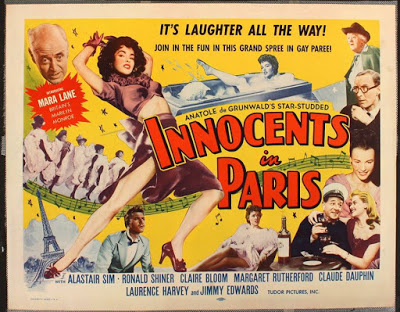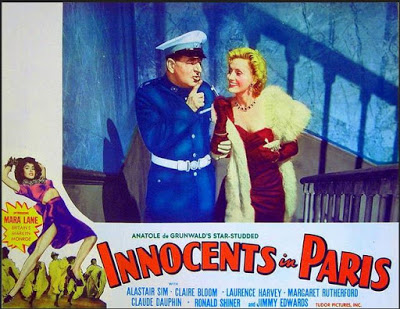Director: Gordon Parry
Year: 1953
Rating: 6.5
Continuing to catch up on some old Margaret Rutherford
films that are as English as cricket and kippers. This one is a mild charmer
telling various stories of some English (and one American) in Paris for a
weekend. Paris where anything can happen; especially love. At least in the
movies. The film follows seven different stories and jumps back and forth
to them often only for a minute or two before it goes on to another and then
back to it later on. So they are all in a sense sketches of English abroad
- back in a time when going to Paris for the weekend was a bit of an adventure.
The cast is terrific but to some degree the main character in the film is
Paris itself with lots of location shooting from the Moulin Rouge where the
Can Can dancers are showing their stuff to the Louvre when there were no
massive crowds around the Mona Lisa to the small quaint streets of Paris.
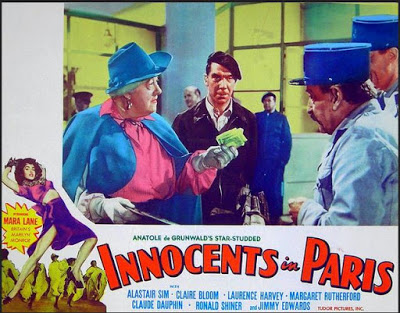
It begins at Heathrow where Immigration is telling everyone boarding the
plane that the cash limit that they can take with them is all of 5 pounds.
Admittedly, the pound was worth more back then but not a lot of money to
have fun with. Also, different back then was no security check to get on
the plane and walking across the tarmac to do so. On the plane an elderly
English lady (Rutherford) is asked to buckle her seatbelt and she has to
admit that she didn't bring one. Other members of the flight are a stodgy
British government official (Alastair Simms) going to negotiate with the
Russians; the drummer (Ronald Shiner, who was the butler in Aunt Clara) in
the military band (look for Christopher Lee in a very small appearance);
a British Britishman (Jimmy Edwards) with a bushy Raj moustache who winks
as he tells people that Paris is so much fun - if you know where to go; A
Scotsman (James Copeland) proudly wearing his kilt; a young woman (Claire
Bloom) on her first trip abroad and finally a gum chewing American mistress
with a southern drawl (Mara Lane, who in fact is British) going ahead to
wait for her married lover.
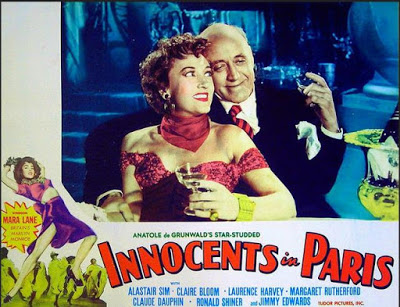
Rutherford paints a picture and magically sells it, Simms loosens up considerably
when he has downed a few drinks in a Russian cabaret where much to my surprise
they were singing a tune in Russian that sounded a lot like Those Were the
Days (Mary Hopkins) which after looking it up was in fact based on Dorogoi
Dlinnoyu written in 1925, a few find romance - Bloom with an elderly suave
Frenchman, the Scotsman with a French lass after his kilt gets blown up in
the wind, the American with a waiter (Laurence Harvey) when her amour doesn't
show up, the drummer with a woman who may be a working girl and the Britishman
with the moustache spends the entire weekend in a British bar talking sports
and drinking British ale.
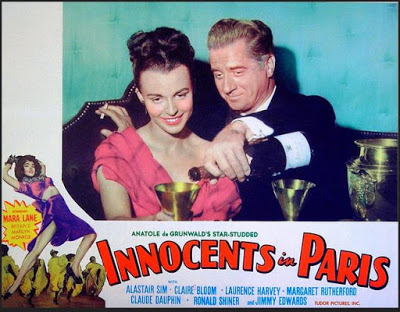
It is all very relaxed - no great drama or great laughs - just following
these folks through Paris is lighthearted fun. This is up on YouTube but
interestingly the segment with the American and the waiter is clearly derived
from a different much worse source - making me wonder that perhaps it was
edited out of the film in some regions because they clearly have sex behind
close doors and I guess that was shocking - probably in America.
